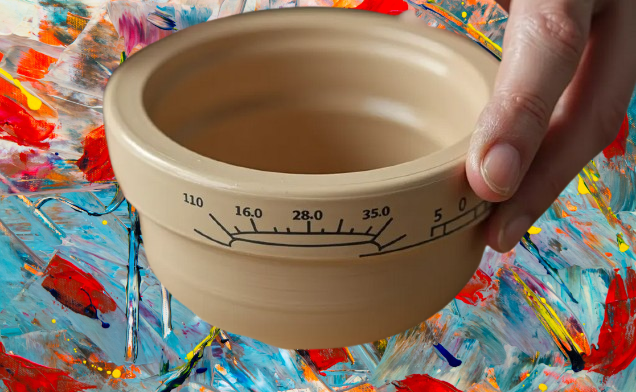In the hastily evolving international of AI and gadget mastering, understanding the nuances of models can be daunting. coedit model how to use tempearture top_p One such model that has received traction is the Credit Model. But what precisely is it? And how are you going to harness its capacity to create lovely outputs?
Table of Contents
You are now alone if you’ve ever felt beaten using technical jargon or struggled with high-quality-tuning your effects. Enter temperature and top_p – essential parameters that elevate your revel in the Credit Model from average to excellent.
Whether you’re a pro expert or simply dipping your feet into this captivating subject, learning these factors beautifies your consequences. Ready to liberate the most beneficial effects? Let’s dive in!
Explaining the Credit Model
The Credit Model is a sophisticated framework designed to collaboratively generate and refine textual content. It operates on the principle of using more than one input, allowing users to edit and co-create content seamlessly.
At its core, the version leverages natural language processing strategies. This permits it to understand context, maintain coherence, and produce excellent outputs tailored to personal specifications.
One standout feature is its ability to study from interactions. The model adapts over the years as users offer remarks or make changes. This outcome results in more refined recommendations that align carefully with the favored tone and style.
With this modern technique, prepare for an extended writing experience in which creativity meets technology. Whether it’s drafting articles or brainstorming ideas, the coedit model how to use tempearture top_p gives infinite opportunities for collaboration on textual content-era projects.
The Importance of Temperature in Coedit Modeling
Temperature is a critical element inside the Coedit version. It controls the randomness of predictions made via the model. Adjusting temperature settings may impact how innovative or conservative your outputs can be.
A better temperature results in more numerous and unexpected selections. This can cause progressive thoughts that might not be able to be triggered with conventional techniques. However, it also increases the chance of producing inappropriate content.
On the turn aspect, reducing the temperature fosters precision and coherence. The outputs become more excellent, predictable, and aligned with unusual patterns, which is helpful for obligations requiring accuracy.
Finding the sweet spot between creativity and reliability is crucial for premier outcomes. Experimenting with numerous temperatures allows users to discover what works best for their unique wishes within the Credit framework.
Top_p: A Key Factor in Achieving Optimal Results
Top_p is a crucial parameter in coedit modeling that drastically affects output quality. It controls the diversity of generated responses by restricting the selection to a cumulative opportunity threshold.
When you select a top_p value, it determines how many options are considered before making a desire. A lower top_p results in greater centered and deterministic outputs, while a higher value introduces extra variability and creativity.
Choosing the right top_p can rework bland content into attractive narratives. Fine-tuning this setting facilitates striking an appropriate balance between predictability and novelty, making sure your version continues relevance without sacrificing originality.
Experimentation is prime when adjusting top_p. Finding that Candy Spot can improve your credit model’s performance, enhancing personal engagement and delight with every interaction.
Step-through-Step Guide to Using the Coedit Model with Temperature and Top_p
To correctly use the coedit model how to use tempearture top_p. Know what you’re aiming to obtain with your content material.
Next, set the temperature parameter. A lower temperature produces more predictable and centered outputs, while a higher setting introduces diversity and creativity. Adjust it primarily based on your desires.
Now cognizance on top_p sampling. This controls the variety of feasible tokens during generation. Lowering this value narrows options to the most likely selections, developing coherent responses; increasing it allows for a more excellent range but may compromise clarity.
After configuring those settings, run the initial exams. Observe how changes in temperature and top_p affect output quality and relevance.
Iterate based on the remarks from those checks. Make modifications until you find the suitable balance that meets your desires without sacrificing coherence or creativity.
Real-Life Examples of Successful Coedit Model Implementation
The coedit model how to use tempearture top_p. For instance, a tech startup used it to decorate its customer service chatbot. By adjusting temperature and top_p settings, it created relevant and attractive responses, drastically improving user satisfaction.
Another example comes from a virtual advertising and marketing enterprise that leveraged the Credit model for content advent. They use first-class-tuned parameters to generate weblog posts tailor-made to particular target market segments. This allowed them to increase visitors by over 30% in just three months.
In academia, researchers used the Coedit version for language translation obligations. By carefully calibrating temperature and top_p values, they accomplished translations with extra contextual accuracy while preserving herbal phrasing.
These examples illustrate how thoughtful implementation can cause excellent results across diverse sectors.
Common Mistakes to Avoid When Using the Coedit Model for Temperature and Top_p Optimization
One common mistake is not altering the temperature setting according to the context. Too high a temperature can cause erratic outputs, while too low might also result in bland responses. Finding that candy spot is essential.
Another pitfall includes overlooking the importance of top_p. Users regularly consciousness entirely on temperature, missing how top_p impacts range and coherence in generated content. Balancing both factors ensures richer results.
Failing to test with extraordinary mixtures can also stunt development. Sticking to one configuration may yield consistent but uninspiring outputs, while variety sparks creativity.
Ignoring feedback loops at some point during optimization hinders development. Regularly reviewing and refining your approach based on consequences facilitates greater adaptation over the years. Engaging with your effects fosters a boom in using the Coedit version correctly.
Conclusion: Why Incorporating Temperature and Top_p into the Credit Model
Incorporating temperature and top_p into the Coedit version opens up international possibilities for generating modern content. These parameters appreciably impact the creativity and coherence of outcomes, permitting users to have satisfactory music outputs in line with their particular desires.
Temperature acts as a dial that adjusts randomness in textual content generation. A higher temperature can also lead to surprising thoughts, while a lower setting maintains more grounded responses. On the other hand, top_p presents an extra layer by controlling the variety of alternatives to be had for choice at some stage in a generation.
By getting to know these elements, coedit model how to use tempearture top_p. Whether you are growing marketing replicas or attractive narratives, understanding how to stabilize temperature with top_p will assist you in obtaining top-rated outcomes tailored precisely to your audience.
Embracing both factors elevates your results and fosters more engagement with readers. As technology keeps evolving, so does gear capacity, like the Coedit version, when used thoughtfully with these key settings in mind.

